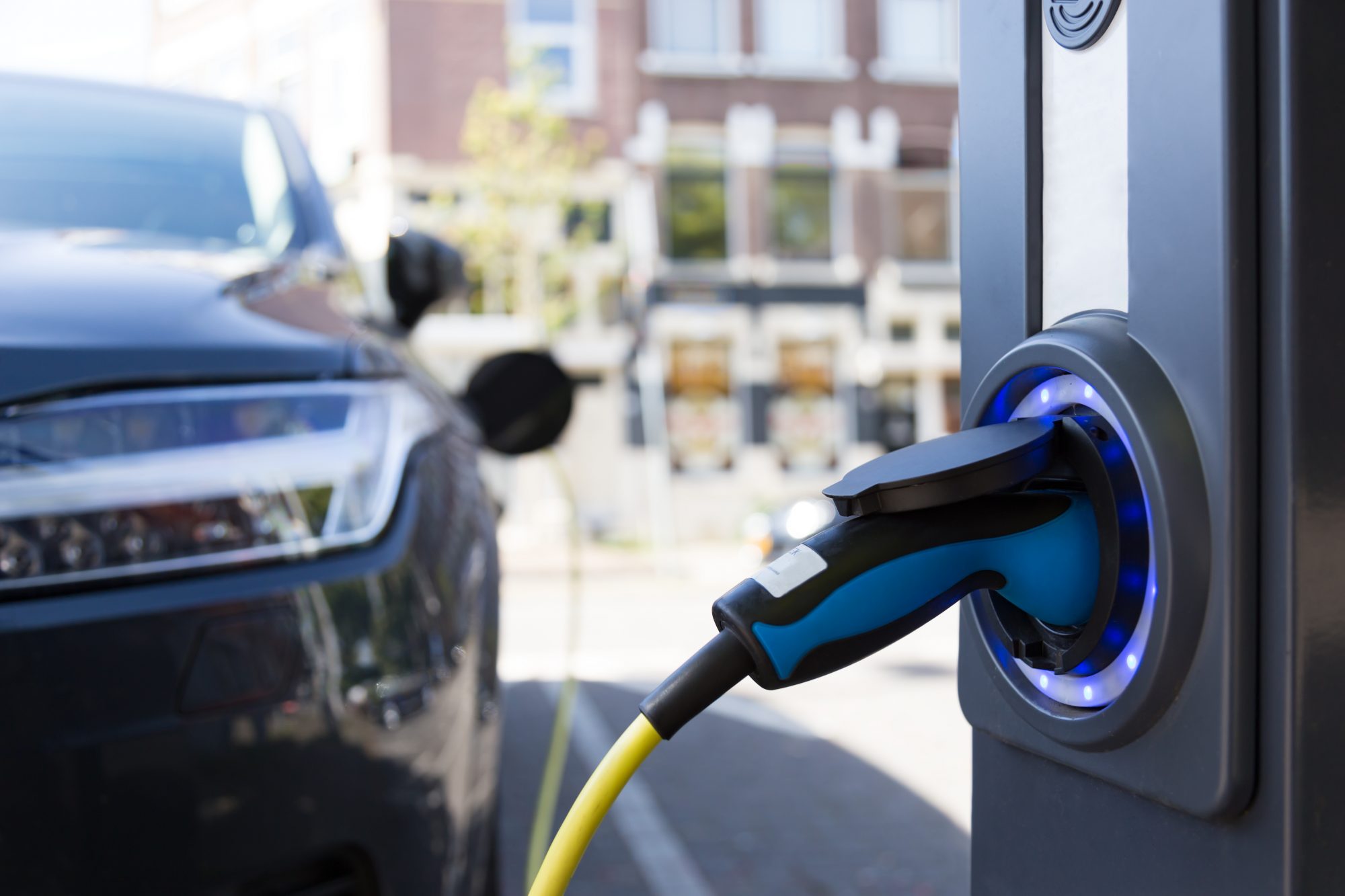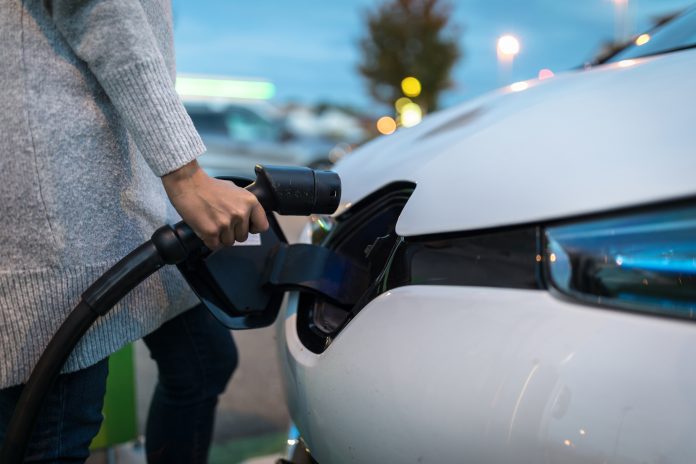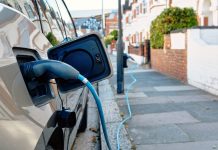Rising electricity prices, inflation and the scarcity of raw materials have cast doubt on the future prospects of electric mobility – so what is the future of the electric car?
A recent report based on the forecasts of futurologist Lars Thomsen shows what the future of electric mobility will look like by identifying the main market trends.
Is the development of electric mobility at risk? Rising electricity prices, inflation and the scarcity of raw materials have cast doubt on the future prospects of electric mobility. But if you look at the future market developments in Europe, the United States and China, electric mobility is making progress worldwide.
According to the SMMT data, a total of 1.61 million new cars were registered in 2022 in the UK, with 267,203 registrations of battery electric vehicles (BEV), accounting for 16.6% of new car sales, and 101,414 plug-in hybrid electric vehicles (PHEVs), accounting for 6.3% of new car sales.
Battery electric vehicles have therefore become Britain’s second most popular powertrain. Today, there are an estimated 660,000 electric cars on the road in the UK and 445,000 plug-in hybrids (PHEVs).

1.61 million new cars were registered in 2022 in the UK
A report by Juice Technology based on the predictions of the futurologist Lars Thomsen confirms that the share of electric vehicles continues to expand, and not only to cars, but also to public transport and heavy-duty vehicles. The tipping point at which electric buses, vans and taxis become more cost-effective than diesel or petrol-powered vehicles is approaching. This will make the decision for electromobility worthwhile not only from the ecological perspective but also from the economic point of view.
The tipping point at which electric buses, vans and taxis become more cost-effective than diesel or petrol-powered vehicles is approaching
To cope with the increasing number of electric vehicles and not to slow down further development; however, a significantly expanded charging network is indispensable. According to Lars Thomsen’s forecast, the demand in all three areas of the charging infrastructure (highway, destination, and home) is rising exponentially.
It has now become crucial to choose the location carefully and to select the appropriate charging station for each site. If this succeeds, it will be possible to earn money with public charging infrastructure not so much with the installation itself, but with related services, such as the sale of food and drink within the charging areas.
What is the impact of high energy prices on EVs?
Looking at the development of the world’s markets, it seems that the trend towards increasingly renewable forms of electricity generation has never stopped, and the costs of these sources of energy are still declining.
Currently, we have distorted prices in the electricity market because one energy source (gas) has made the price of electricity disproportionately more expensive (along with some other temporary factors). However, the current situation is not permanent, as it is closely linked to geopolitical and financial tensions. In the medium to long term, electricity will become cheaper and cheaper, the more renewable energies are generated and the “smarter” the power grids become.
Electricity will become cheaper, the more renewable energies are generated and the “smarter” the power grids become
Decentralised power generation requires smart grids for the intelligent distribution of the available electricity. Because e-cars can charge at any time when they are idle, they will play a key role in creating stability in the power grid by storing away production peaks. For this to work, however, dynamic load management is a must for all the new charging stations that come onto the market.
The future of electric mobility lies in the recharging infrastructure
There are some striking differences between the European countries surrounding the development status of the charging infrastructure. In Scandinavia, the Netherlands and Germany, for example, the development of the infrastructure is already very advanced.
The good thing about charging infrastructure is that it doesn’t take a long time to build and install it. Roadside charging stations can be planned and built in a matter of weeks or a few months, while a charging station at home or work takes even less time than that to plan and install.
Therefore, when we talk about “infrastructure”, we aren’t talking about the timeframes that it used to take to build highways and bridges of nuclear power plants. For this reason, even countries that are far behind can catch up very, very quickly.
In the medium term, public charging infrastructure will be found everywhere where it genuinely makes sense for the operator and the customers. The type of charging must also be adapted to the location: after all, what use is an 11 kW AC charger at a motorway service station if people only want to stop there for a coffee or a snack before driving on?
However, a charger at a hotel or amusement park car park makes sense – even more than a super-fast but expensive DC fast charger: car parks at hotels, leisure facilities, tourist attractions, shopping centres, airports and business parks can be equipped with 15 to 20 AC charging stations for the price of just one HPC (high-power charger).

EV users confirm that for the average daily distance of 30-40 km (18-25 miles), there isn’t any need to visit public charging points. All you have to do is plug your car into a charging point at work during the day and at home at night, where it is usually left for longer periods. In both cases, the electricity is AC (alternating current), which is slower and therefore helps to preserve the battery for longer.
E-mobility must ultimately be considered as a whole. That is why the right type of charging station is needed in the right place. The charging stations then complement each other to form a comprehensive network.
It is certainly the case, however, that charging at home or at work using AC power will always be a cheaper alternative for users because by 2025, an increasing number of variable charging tariffs will be offered, reducing the price of grid-supported charging: depending on the amount of renewable energy available in the grid, the time of day or night and the grid load, charging at such times will automatically cost less.
There are technical, economic and environmental reasons for this, and the benefits are mediated by the semi-automated (intelligent) charging planning between the vehicle, the charging station operator and the grid operator.
The electrification of heavy vehicles is moving ahead
While almost 10% of all cars sold worldwide in 2021 were electric, the global sales figures for HGVs was only 0.3%. So far, electric HGVs have been substantially deployed in China only, supported by the government. Other countries have announced plans for the electrification of HGVs and manufacturers are expanding their portfolios.
We can expect to see more and more electric HGVs on the road by 2030
In terms of growth, we can expect to see more and more electric HGVs on the road by 2030. At the point at which the electric alternative to a Diesel HGV reaches its tipping point, i.e., when it has a lower TCO (Total Cost of Ownership) the choice will “tip” towards electric. This inflection point will be gradually reached by 2026 in almost all use cases and operational scenarios. That is also the reason why according to the forecast, it is expected that the adoption of electric drive trains in these segments will have an even steeper exponential than what we have seen in passenger cars in the past.
US: market share of EVs expands from the coast toward inland
The USA is a region that has so far lagged Europe in terms of the development of electric mobility. The current figures suggest that sales of electric cars in the USA have increased rapidly in recent years, however.
The Inflation Reduction Act and the high prices of gasoline, not to mention a lot of new and compelling products, e.g. vans and pick-up trucks across the board, have created new momentum for the adoption of EVs in the US. The already impressive market share of EVs on the West and East Coast is now moving inland.
In many segments, EVs are the better choice for vehicles, not just for ecological reasons, but also in terms of economical and performance considerations. The EV charging infrastructure is also expanding very rapidly in the US, with the challenge being keeping up with the increasing demand.
The development in China: the rise of a global leader
China is currently going through a small recession, but within the next five years, it will change from an importing country to an exporting country for motor vehicles. Domestic demand is expected to recover and to show strong growth figures as early as 2023, while Chinese manufacturers will increasingly take a greater market share in Europe, the US, Asia, Oceania, and India in the coming years.
China could gain a market share of up to 20% by 2027, and become dominant in the categories of innovation and new mobility in the medium to long term. The traditional OEMs in Europe and the USA are likely to find it increasingly hard to compete against this opponent: in terms of key components such as batteries, electronics, the use of artificial intelligence and autonomous driving, the Chinese not only appear to be further ahead, but above all else, faster.
If the traditional OEMs do not succeed in dramatically increasing their agility in terms of their innovation, China will be able to secure large parts of the cake for itself in the medium to long term.











